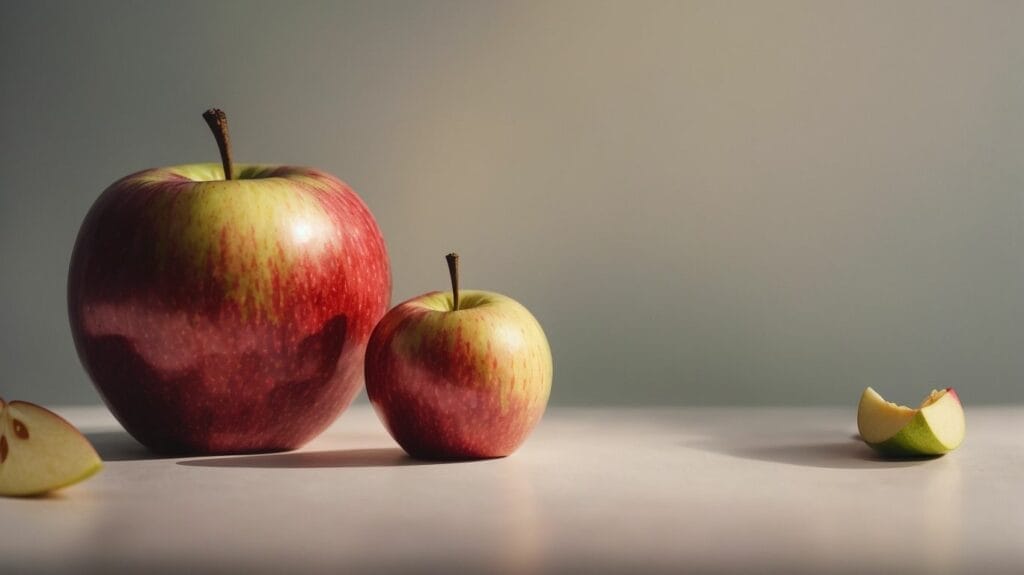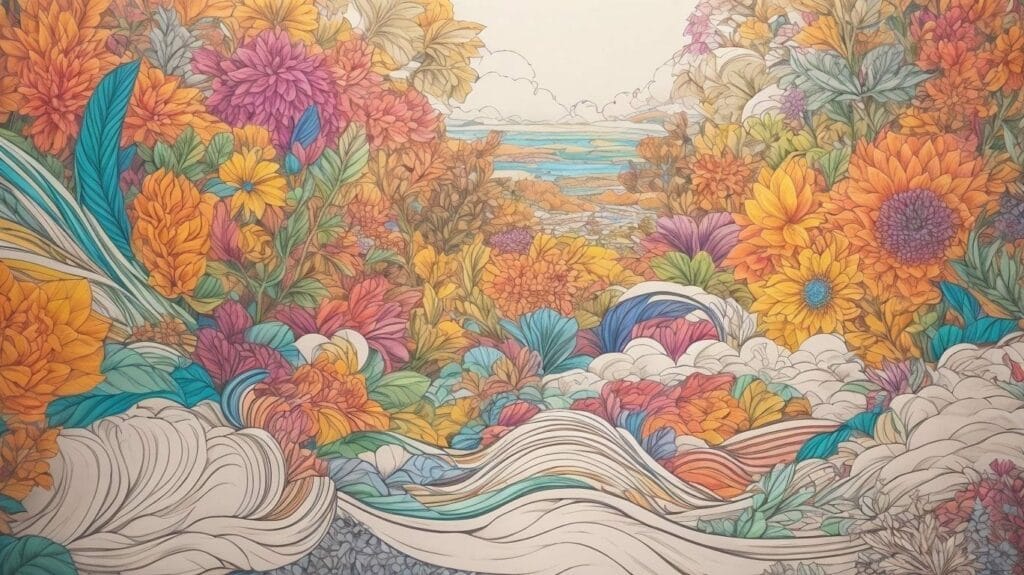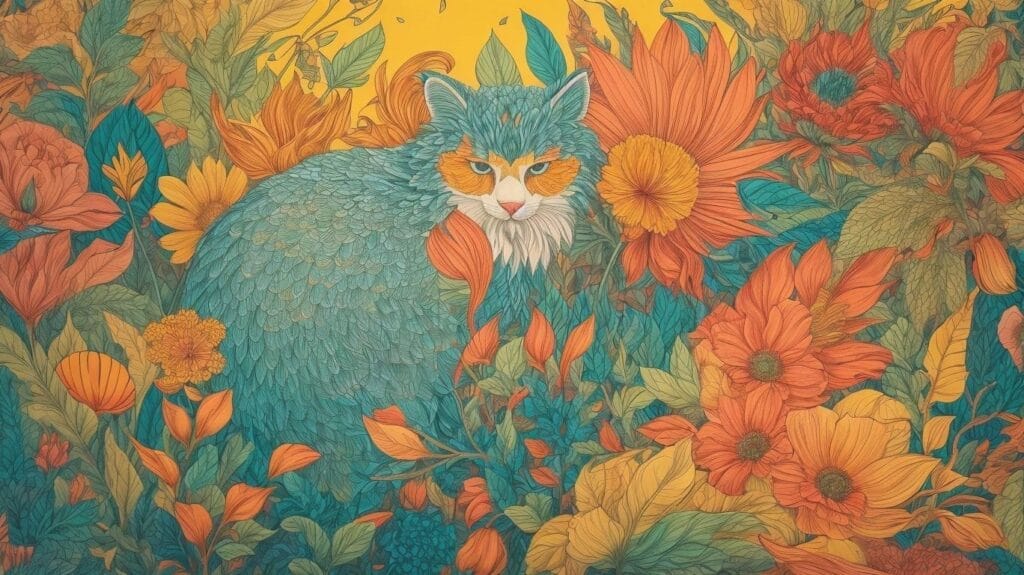Welcome to our comprehensive guide on simple shading techniques for beginners. Whether you’re new to drawing or looking to sharpen your skills, understanding how to shade effectively can make a significant impact on the quality of your artwork. In this article, we’ll explore the importance of shading in drawings and delve into the differences between values, tone, and contrast. We’ll provide a quick exercise to help you get started, followed by 10 essential shading techniques that will elevate your drawing abilities.
We’ll discuss mastering shading with pencils, including tips on understanding value, creating contrast, and mastering light and shade. We’ll guide you through choosing the right pencils for shading, considering important factors in pencil selection. By the end of this article, you’ll be equipped with the knowledge and techniques to bring your drawings to life through the art of shading.
Key Takeaways:
- Master the art of shading by understanding the importance of values, tone, and contrast in drawings.
- Enhance your drawing skills with 10 different shading techniques, from blending to woven hatching.
- Choose the right pencils and master the use of value, contrast, light, and shade to create dynamic and realistic drawings.
Simple Shading Techniques for Beginners
Mastering shading techniques is a vital aspect of drawing, allowing artists to capture the interplay of light and shadow with precision and artistry. As an expert in the field, Kelly Medford, known for her captivating sketches of Rome, Italy, shares invaluable insights into the art of shading and its significance in creating realistic drawings.
Shading is an art form that adds depth and dimension to a drawing, enhancing its realism and visual impact. Through the careful manipulation of light and dark, shading brings life to the subject, defining its form and structure. Kelly Medford’s affiliation with Rome, known for its rich history and architectural marvels, has greatly influenced her understanding of light and shadow, which she expertly incorporates into her drawings.
Her teachings on shading not only focus on technical aspects but also emphasize the emotional and storytelling elements that shading can add to a piece of art. In her tutorials, she breaks down complex shading techniques into simple, beginner-friendly steps, making them accessible to aspiring artists of all skill levels.
Understanding the Importance of Shading in Drawings

Credits: Loststorystudios.Com – Harold Brown
Understanding the role of shading in drawings is essential for artists seeking to imbue their creations with depth, form, and lifelike qualities. By effectively manipulating values, artists can evoke textures, forms, and contrasts, showcasing their observational skills and mastery of the art form.
Exploring the Difference Between Values, Tone, and Contrast
In the realm of shading, understanding the nuances of values, tone, and contrast is pivotal for artists aiming to infuse their drawings with depth and realism. By mastering the interplay between light and dark, artists can create smooth transitions, captivating shapes, and striking contrasts within their works.
Values in shading refer to the range of lightness and darkness in a drawing, encompassing the full spectrum of grays between white and black. Tone, on the other hand, pertains to the specific quality of light and shadow in a particular area, adding dimension and depth to the artwork.
Crucially, contrast emphasizes the disparities between light and dark, allowing for dramatic impact and visual interest. When applied with precision and skill, these elements transform a two-dimensional drawing into a layered, dynamic composition that captures the eye and evokes emotion.
Understanding the role of values, tone, and contrast in shading techniques equips artists with the tools to bring their creations to life, adding an extra dimension of realism and allure to their pencil art.
How to Shade: A Quick Exercise
To grasp the fundamentals of shading, aspiring artists can engage in a quick exercise that involves capturing the interplay of light and shadow on simple shapes. By focusing on creating contrasts, textures, and realistic shadows, artists can refine their shading techniques and lay a strong foundation for future artistic endeavors.
Begin by choosing a simple geometric shape, such as a sphere or cube, as your subject. Carefully observe the direction of the light source and the areas where shadows naturally form. Start by lightly sketching the basic shape using a pencil. Next, identify the areas where the light hits the object most directly, known as the ‘highlight’ areas, and mark them with a lighter shade. On the opposite side, mark the areas that are cast in the deepest shadow with a darker shade to create a dramatic contrast.
Consider the surface characteristics of the object. If it’s smooth, the transitions between the light and shadow will be sharper. For a textured surface, the transitions will be softer, with small variations in value. Use hatching and cross-hatching techniques to create textures and variations in the shadows. Pay attention to subtle changes in value within the shadow areas to add depth and dimension to your drawing.
10 Shading Techniques to Enhance Your Drawing Skills

Credits: Loststorystudios.Com – Mark Martinez
Embark on a journey to enhance your drawing skills with a diverse array of shading techniques that elevate your artistic prowess. From the intricate art of cross-hatching to the delicate balance of stippling, these techniques enable artists to breathe life into their drawings by expertly manipulating light, shadow, and form.
Blending
Blending serves as a fundamental shading technique, enabling artists to seamlessly merge different tones and create smooth transitions, lending a sense of realism and tactile texture to objects within their drawings.
By delicately overlapping and interweaving pencil strokes of varying intensities, artists can achieve a harmonious fusion of shades, transforming a flat drawing into a three-dimensional representation. The meticulous blending process accentuates the intricate nuances of light and shadow, imbuing the artwork with depth and dimension. This technique plays a crucial role in amplifying the texture of the subjects, whether it’s the softness of fur, the roughness of tree bark, or the smoothness of a ceramic vessel. By mastering the art of blending, artists can impart a captivating tactile quality to their creations, evoking an immersive sensory experience for the viewer.
Contour Hatching
Contour hatching involves the strategic use of parallel lines to depict the contours and forms of objects, infusing drawings with depth and dimension through meticulous line work and artful manipulation of shapes.
This shading technique is highly effective in creating the illusion of three-dimensionality on a two-dimensional surface. By varying the spacing and thickness of the parallel lines, artists can convey a sense of volume and texture, bringing their subjects to life. Contour hatching can be used to define the shape and structure of objects, as well as to enhance the play of light and shadow, ultimately contributing to a more realistic and dynamic portrayal.
Cross Hatching
Cross-hatching entails the meticulous layering of intersecting lines to build up tonal values, create contrast, and convey the intricate interplay of light and shadow on various shapes, elevating the visual impact and depth of drawings.
By varying the density, spacing, and angle of the intersecting lines, artists can manipulate the intensity and direction of light to achieve a three-dimensional effect. The deliberate positioning of the lines allows for the creation of textured surfaces and the suggestion of form. Utilizing this shading technique effectively is crucial in depicting the volume and depth of objects, enabling the artist to translate their perception of light and shadow onto a two-dimensional surface with remarkable precision.
Hatching
Hatching involves the strategic application of closely spaced parallel lines to convey tonal values, define forms, and evoke realistic shadows, offering artists a versatile and precise shading method to enhance their drawings.
By varying the spacing and direction of the lines, artists can create a wide range of textures and depths. This technique is often used in pen and ink drawings to add dimension and realism. The controlled use of hatching can also contribute to the dramatic lighting effects in composition, adding visual interest and depth to the artwork.
Hatching plays a crucial role in creating a sense of three-dimensionality on a two-dimensional surface, allowing artists to depict the play of light and shadow effectively. It’s a fundamental skill for any artist seeking to master the art of shading and capturing realistic forms.
Rendering
Rendering stands as a sophisticated shading technique, allowing artists to meticulously depict the intricate interplay of light and shadow, capture detailed textures, and convey the subtle nuances of form within their drawings.
One of the key elements of rendering is its ability to add depth and dimension to a piece of art. By skillfully applying varying degrees of pressure and manipulating pencil strokes, artists can create the illusion of three-dimensional space, bringing their subjects to life on paper.
This technique is especially essential when portraying organic textures, such as the delicate softness of petals on a flower or the rough, rugged surface of a weathered tree bark.
Scribbling
Scribbling offers a dynamic and expressive shading technique, with artists utilizing spontaneous and gestural lines to evoke textures, define forms, and infuse their drawings with an energetic and captivating visual quality.
Through the use of scribbling, artists can build layers of depth and dimension in their works, creating a sense of movement and liveliness. This technique allows for the exploration of various textures and surfaces, from the roughness of tree bark to the softness of a petal, enhancing the overall visual experience for the viewer.
The spontaneity inherent in scribbling also adds an element of immediacy to the artwork, capturing the essence of a moment and conveying a raw, unfiltered emotion.
Scumbling
Scumbling entails the deliberate application of broken and irregular lines to create textural effects, enhance contrast, and imbue drawings with a sense of organic and varied forms, adding depth and visual interest to the artwork.
The scumbling technique involves lightly dragging a dry brush or pencil over the surface, allowing the irregularities of the texture to guide the application. By varying the pressure and direction, artists can simulate the appearance of natural textures like foliage, fur, or rough surfaces, infusing the artwork with a tactile quality. This method effectively captures the interplay of light and shadow, resulting in imagery that feels dynamic and lifelike.
Stippling
Stippling involves the meticulous application of tiny dots to build up tonal values, evoke textures, and define forms, offering artists a precise and intricate shading technique to infuse their drawings with depth and visual richness.
By strategically varying the density, size, and spacing of the dots, artists can create an astonishing range of effects, from subtle transitions in shading to intricate details in textures. The process demands patience and precision, as each dot contributes to the overall visual impact.
When applied skillfully, stippling can produce stunning results, transforming a two-dimensional surface into a captivating three-dimensional depiction.
Tick Hatching
Tick hatching employs short, distinct lines to create tonal values, define forms, and convey realistic shadows, providing artists with a versatile and controlled shading technique to add dimension and depth to their drawings.
This shading method involves applying numerous short lines in close proximity to one another, allowing the lines to overlap in varying densities to achieve different levels of darkness. By adjusting the spacing and angle of the lines, artists can precisely control the intensity and direction of shading, resulting in realistic depictions of light and shadow. The meticulous nature of tick hatching enables artists to convey intricate details, textures, and gradations in their artwork, making it an invaluable tool for creating depth and dimension in drawings.
Woven Hatching
Woven hatching involves the intricate interlacing of lines to build tonal values, evoke contrast, and render realistic shadows, offering artists a meticulous and structured shading technique to enhance the visual impact and depth of their drawings.
By intersecting parallel lines at various angles, artists achieve a dynamic range of value and texture. This technique enables the creation of depth and dimension, bringing life to the subject matter. Woven hatching requires precision and attention to detail, as the interwoven lines must maintain consistent spacing and direction to achieve the desired effect.
When applied skillfully, woven hatching can transform a two-dimensional image into a compelling representation of a three-dimensional form. Its contribution to the visual impact and realism of artwork is undeniable, making it an invaluable tool for artists seeking to elevate the quality of their drawings.
Mastering Shading with Pencils
Mastering the art of shading with pencils encompasses a profound understanding of values, light, contrast, and texture, enabling artists to imbue their drawings with depth, realism, and captivating visual allure. Through meticulous practice and honing of observational skills, artists can elevate their shading prowess and breathe life into their artistic creations.
Understanding Value in Drawings
Value in drawings encompasses the depiction of light and shadow, form and texture, and the creation of captivating contrasts, serving as a cornerstone of effective shading techniques and infusing drawings with visual depth and richness.
Through the skilled manipulation of value, artists convey the play of light across surfaces, the interplay of shadow and illumination, and the textural nuances that give objects their tactile quality. This interplay of light and shadow brings an element of drama and three-dimensionality to the artwork, adding a sense of depth and creating an immersive visual experience for the viewer. By effectively utilizing value, artists can evoke a sense of volume, weight, and atmosphere, lending their drawings a heightened sense of realism and emotional resonance.
Bringing Contrast into Your Work
Infusing contrast into artistic works through skillful shading techniques elevates the visual impact and depth of drawings, enabling artists to create compelling compositions that captivate the viewer’s gaze and evoke powerful emotional responses.
The contrast in art not only distinguishes different elements and shapes within a composition but also plays a crucial role in creating the illusion of depth and three-dimensionality. By deftly manipulating light and shade, artists can sculpt forms and imbue their artworks with a sense of volume, enhancing the overall visual interest and dynamism.
The judicious use of contrast also allows for the portrayal of dramatic light effects and the depiction of intricate textures, adding richness and complexity to the artistic narrative.
Explaining Light and Shade
The interplay of light and shade in drawings holds the power to evoke mood, define form, and underscore the presence of textures, offering artists a dynamic and evocative medium to express their artistic vision and creative intent.
As light changes its angle and intensity, its interaction with the subject creates a lively and ever-changing play of contrasts, unveiling different emotional undertones. The strategic deployment of shadows can sculpt the perception of depth, adding a three-dimensional quality to the composition. The subtle gradations from light to dark allow artists to convey the tactile richness of surfaces, from the delicate softness of petals to the roughness of weathered stone.
Top Tips and Tricks for Shading Drawings
Discover top tips and tricks for shading drawings, enabling artists with valuable insights, techniques, and approaches to master the art of shading and elevate their drawings to new heights of realism, depth, and visual allure.
One of the most essential aspects of shading is understanding light and shadow. Mastering the interplay between light and shadow can significantly enhance the three-dimensional quality of your drawings. Experiment with different light sources to observe the varying effects on the objects. Exploring different shading techniques such as hatching, cross-hatching, stippling, and blending can add depth and dimension to your artwork.
Consider the texture and surface of the objects you are shading. Understanding the surface properties and how they interact with light can help in creating realistic shading. Utilize reference images to study how light falls on different surfaces and how shadows are cast. This can provide valuable insights into replicating realistic shading in your drawings.
Another effective way to enhance shading is to pay attention to the values and contrasts in your drawings. By using a full range of values from light to dark, you can create depth and realism. Pay meticulous attention to the gradation of tones and use shading to emphasize the focal points of your composition, guiding the viewer’s eye and adding visual interest.
Choosing the Right Pencils for Shading

Credits: Loststorystudios.Com – Elijah Harris
Choosing the right pencils for shading plays a pivotal role in achieving desired values, textures, contrasts, and forms within artistic works, enabling artists to wield their tools with precision and finesse to bring their creative visions to life.
Factors to Consider in Pencil Selection
When looking into pencil selection for shading, artists should consider factors such as lead softness, tonal range, and texture compatibility to effectively convey contrast, create captivating textures, and define forms within their artistic works.
Lead softness plays a crucial role in shading, as softer leads like 4B and 6B produce darker and richer tones, ideal for deep shadows and expressive textures. On the other hand, harder leads like 2H and 4H are suitable for lighter shading and fine details.
The tonal range of a pencil refers to its ability to create a spectrum of values, from the deepest blacks to the lightest grays. An extensive tonal range allows artists to depict a wide range of form and depth in their drawings, enhancing the overall visual impact.
Texture compatibility involves the interaction between the pencil lead and the paper surface. Specially textured papers can enhance the grainy effect of softer leads, while smoother surfaces lend themselves well to fine details and intricate textures.
Frequently Asked Questions
What are some simple shading techniques for beginners?
Some simple shading techniques for beginners include using cross-hatching, stippling, and blending with a pencil.
How do I cross-hatch when shading?
To cross-hatch, use your pencil to create parallel lines in one direction, then go back over them with lines in the opposite direction to create a criss-cross pattern.
What is stippling, and how do I use it for shading?
Stippling is a technique where you use small, repeated dots to create shading. The closer together the dots are, the darker the shading will appear.
Can I use different types of pencils for shading?
Yes, you can use different types of pencils, such as graphite pencils, charcoal pencils, or colored pencils for shading. Each will create a different effect.
How can I practice my shading techniques?
You can practice your shading techniques by creating simple shapes and objects and shading them with different techniques. You can also find shading tutorials online to follow along with.
What are some common mistakes to avoid when shading as a beginner?
Some common mistakes to avoid when shading as a beginner include pressing too hard with the pencil, not blending enough, and not having a full range of shading values from light to dark.




